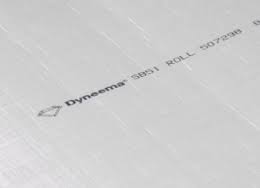The involvement of the United States in conflicts in Afghanistan and Iraq has profoundly influenced developments in military body armor and how it is distributed. Conducting operations against an invisible enemy has meant that all warfighters are subject to attack. When there is no front line, it has become necessary to deploy body armor to logisticians as well as to combat personnel.
At the same time, the wars in Southwest Asia have exposed opportunities to improve and enhance body armor. The enemy exposed vulnerabilities in the traditional front- and back-plate armor configuration by shooting coalition combatants in the side. Armor has been enhanced to include side plates and shoulder plates, as well as neck, throat and groin protection.
But providing warfighters with more armor has raised yet another challenge: how to make body armor lighter and less burdensome to the warfighter while providing equivalent protection. Absent a breakthrough in new body armor materials, this will likely be accomplished by modularizing body armor, allowing warfighters to be equipped with armor tailored to the threats they expect to face on a given mission.
The modern era of military body armour arrived in the late 1990s, when the Interceptor vest was introduced. The vest, woven of strong fibers such as Kevlar, was able to stop small caliber pistol fire at close range as well as protect against blast fragments, and could also accommodate ceramic plates that could stop rifle fire at a distance. The lighter ceramics replaced steel plating that had been distributed to warfighters in earlier operations, such as the 1993 Somalia conflict immortalized in the 2001 film “Black Hawk Down.”
Since that time, the U.S. military had been searching for a substitute for steel armor. Ceradyne Armor Systems Inc. was already producing ceramic armor for Apache helicopters, said Marc King, the company’s president. Since weight is at a premium on choppers, it was natural to consider ceramics when considering lightening the body armor load.
When the U.S. Army’s 10th Mountain Division was deployed to Afghanistan in late 2001, “We had to reallocate all of our Army stocks body armor to the 10th to give them what they needed for protective gear,” said Lieutenant Colonel Jon Rickey, product manager for soldier protective equipment within the Army’s Program Executive Office Soldier. Even then, only 30 percent of 10th Mountain Division personnel were equipped with ceramic plate armor as of 2003.
This level of distribution of armor was in accordance with U.S. military doctrine before 2001, when U.S. operations in Southwest Asia began. “The thought was the frontline soldiers would receive vests and two SAPI [Small Arms Protective Inserts] plates for front and back,” said King. “The rest of the Army, the ordnance guys, truck drivers and other personnel would only receive a vest. This was done on a cost basis because the system was pretty expensive. So when we entered Afghanistan and then Iraq, the Interceptor system was not widely distributed among soldiers.”
But fighting insurgencies, as opposed to conventional theater warfare, changed the need among U.S. personnel for armor. The year 2004 saw a big push toward fielding SAPI plates to all warfighters. By April 2004, two million SAPI plates were fielded to the theater. Later that year came the addition of auxiliary deltoid protection to the Interceptor system, which was designed to protect warfighters from fragments resulting from improvised explosive devices (IEDs).
Meanwhile, commanders in theater perceived enhanced enemy threats from 7.62 mm rifle fire and requested additional protection from the ceramic plate inserts. In January 2005, the Enhanced Small Arms Protective Inserts [ESAPI] were introduced, and a year later, side plates were deployed to protect warfighters against enemy marksmen.
“The SAPI plates included a specified level of protection and served the warfighter well in the initial part of the wars in Iraq and Afghanistan,” said King. “But in early 2005, it appeared the enemy figured out how to defeat the body armor and that we needed to increase the level of protection provided by the ceramic plates.” The Army at that point specified an anti-armor piercing level of protection for the plate inserts, and Ceradyne found itself in a unique position to provide the Army what it was looking for. The company had already developed a plate that fit the Army’s description for the Special Forces Command, and with a few minor modifications was prepared to answer the Army’s requirements for ESAPIs. Ceradyne was able to ramp up production for ESAPIs within 60 days and has since provided two million plates to the Army.
That was only the beginning of a series of enhancements to body armor that have been provided to, or are being investigated by, the Army. “In 2008 we did demonstrations on concealable body armor, on body armor for mounted soldiers and on protection for extremities,” said Rickey. “We have also been looking at helmet pads that could be a key part of protection against blunt trauma impacts.”
In late 2009, the Army ordered new sets of ceramic plates, dubbed the XSAPI, which are designed to provide protection over and above the ESAPI against potential future threats, the exact nature of which are classified. Ceradyne filled an order for 120,000 XSAPIs. According to Rickey, the ESAPIs are still the plates that are being deployed with warfighters in Afghanistan. The XSAPIs represent a contingency inventory on hold for possible future use.
The vests worn by warfighters have also seen enhancements in recent years. “Last year we fielded a plate carrier to soldiers in Afghanistan operating at higher altitudes as a way to lighten the soldiers’ loads,” said Rickey. “The plate carrier is meant for areas where [we] don’t expect heavy contact with the enemy. We want to reduce weight wear and tear on the soldier.”
The plate carrier, unlike the protective vest, does not provide any ballistic protection itself but merely carries plates against longer range rifle fire. But the plate carrier is also lighter than the vest, shaving nine pounds off the soldier’s load. “We are trading off protection against weight,” Rickey explained. “Lowering weight allows you to increase mobility and the more mobile the solider, the more lethal he is.”
Point Blank Solutions Inc., a major supplier of the Improved Outer Tactical Vest (IOTV) currently being used by the Army, has introduced a number of innovations and is working on still more. “We were challenged by the Army to develop a vest that could be worn underneath the uniforms,” said Pat Stallings, the company’s senior vice president for operations. “This is designed for low intensity operations such as peacekeeping.”
Point Blank has also introduced a “vest of the future” concept at one of the Army’s body armor demonstrations. The idea is to move the Interceptor system to a more scalable and modular design so that warfighters can be outfitted with armor to suit a particular mission. This also reduces the weight of the armor when the full complement of protection is not required.
“Instead of issuing a complete set of body armor that has to be worn on operations,” explained Stallings, “the warfighter would get a bag which contains gear usable from low intensity situations all the way up to full assault IOTVs with plates.”
One European company recently announced an innovation in materials that it said will enhance the protection achievable from ballistic vests, which combines minimum weight with high protection against handgun ammunition, fragments and knives. DSM Dyneema, a company based in Urmond, Netherlands, is the inventor and manufacturer of Dyneema, an ultra strong polyethylene fiber.
The new material, called Dyneema SB51, is the latest in a line of fibers that includes the Dyneema SB21 and SB31 UD grades. “Numerous ballistic tests show that Dyneema SB 51 takes performance to the next level,” said Sasja Spiertz, business segment manager for personal protection at DSM Dyneema. The new fiber demonstrated improvements of 10 percent to 20 percent over earlier Dyneema iterations. DSM Dyneema also manufactures similar materials for use in other applications, such as helmets and vehicles.
Dyneema SB51 is directed toward threats encountered by militaries in central and eastern Europe and the Asia Pacific region, particularly the 7.62×25 mm Tokarev bullet, widely used in former Soviet states and neighboring countries, as well as the Chinese P54 pistol ammunition.
“Dyneema SB51 can be used both in tactical and concealed vest designs,” said Spiertz. “Its use enables vests to be designed with low back face signature,” a measurement of the energy absorbed by the body, “while remaining thin, light and comfortable.” The watchword for the future of U.S. military body armor is to continue to lighten the load of warfighters. PEO Solider has a goal of reducing the weight of body armor by 20 percent. “Forty percent of the weight of a soldier’s gear is tied to protective equipment,” said Rickey, “including helmet, vest and plates.”
This goal has become all the more urgent since Afghanistan took center stage of U.S. overseas military operations. “A lot more soldiers go on foot in Afghanistan,” said King. “In Iraq, it seemed like most warfighters were mounted.”
Rickey foresees a more “modular, scalable, mission-tailorable set of equipment” that allows commanders and warfighters “to scale up or scale down the level of protection based on the level of threat.” The Army also continues to work with industry and academia to investigate new materials that could also lighten the load.
Ceradyne’s King agrees that a scalable, modular body armor kit is the way to go, at least for now. “Not every soldier needs to be protected from a threat at muzzle velocity,” he said. “If the threat is at 200 meters, the velocity is going to be lower, and you can have less armor to accomplish the same level of protection. Less armor means less weight.”
King doesn’t see any new material breakthroughs on the horizon for plate armor, necessitating a different approach. Nanomaterials, such as carbon nanotubes, constructed at a very small scale, hold the promise of producing stronger, more dent resistant, and lighter materials but “have not lived up to their hype,” said King. “Besides, some of these materials have unacceptable environmental side effects. They are also extraordinarily expensive.”
Modular, scalable body armor sets would also increase costs, King cautioned, “because now you are buying two sets, possibly even three sets, of plates for each warfighter.”
Point Blank is also taking up the challenge of reducing the weight of body armor by putting some dollars into research and development of new vest designs, materials and manufacturing techniques. The current IOTV weighs 16 pounds without any inserted plates. “We’ll see if we can’t take three or four pounds out of the vest while maintaining protection,” said Stallings. “We’re putting a lot of work into that now.”
Point Blank is going about this task by “deconstructing the ballistics” and considering everything from the design of the vest, to its material, to the way it is manufactured. With a redesign, “we may be able to reduce a ply or two” in the fabric, said Stallings. The company is also looking toward innovations it has produced in the commercial market for law enforcement organizations with an eye toward adapting them for the military. “We have a patented technology that better distributes the weight of the body armor across the body and that can reduce the weight of the armor,” said Stallings. “The challenge is how to integrate that into a ballistic vest designed for the military.”
The body armor manufacturer Point Blank is also investigating new vest materials. “We want to see if we can find lighter, stronger materials from different providers and perhaps array them in different combination to see what the effect is,” said Stallings. “There may be a way to quilt some of the material instead of stacking it.”
The risk in redesigning the vest is, however, that some innovations that provide better protection against ballistic threats might be less effective against the slower but sharper blast fragments that the vest also stops. “All this goes into the research and development,” said Stallings. “To get the ideal performance versus weight is the balancing act we also do whenever we do these constructions.”
TYR Tactical has set out to revolutionize tactical equipment for the next generation warrior. Channeling that warrior-like mindset and implementing a holistic design approach, TYR (pronounced ‘tier’/“Norse God of War”) created a patent-pending, hybrid material called PV. PV Nylon—a laminate of 500 denier Cordura and 200 denier Kevlar—provides seven to 10 times the abrasion resistance of standard mil-spec nylon.
By using PV Nylon in critical wear areas, there is significant weight reduction of up to 50 percent in some equipment while still providing increased performance. The material has significant structural benefits for load carriage, including: reduced system weight, minimal stretch and sag, and improved cut, tear, puncture and wear resistance.
The creation of PV nylon is instrumental in the design of TYR’s performance line of outer carrier, load carry, and pouch systems. TYR has truly designed an advanced catalog of tactical gear for the next generation warrior which includes the Lightweight Plate Carrier (LWPC), Lightweight Assault Pack (LAP), Modular Sniper System (MSS), and Modular Scalable Tailorable (MST) vest.
The MST System, which has been down selected for the Army’s SPD-8 contract to replace the IOTV, is a full tactical combat system that exceeds IOTV performance in a low profile armor system and weighs 23 percent less. Consisting of ESAPI/ESBI plate design and soft armor panels, the plate carrier is worn externally, has extended ballistic coverage and provides assault rifle protection with increased soldier mobility.
TYR Tactical is focused on forward thinking to design and engineer tactical equipment for warriors and will continue down this path to ensure safe and optimally performing gear for soldiers, the company stated. “Our goal is not to provide gear that has been available in the past but instead what is needed in our future battlefields,” the company concluded.










